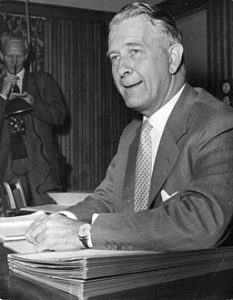
Bertil Gotthard Ohlin
1899-1979

Swedish economist Bertil Ohlin received the Nobel Prize in 1977, along with James Meade, for his “pathbreaking contribution to the theory of international trade and international capital movements.” Ohlin’s prize was based on his book Interregional and International Trade, published in 1933. With a 1919 article by his former teacher Eli Heckscher as his starting point, Ohlin showed that both interregional and international trade occur because goods can move more easily than the labor, capital, and land that produce them. Therefore, a country with a relatively abundant factor of production should export goods that intensively use that abundant factor, and should import those that intensively use the factor that is relatively scarce. Much later, economists showed that this would be true only for a world with just two goods. (See wassily leontief.)
In publications beginning in 1927 and ending in 1934, Ohlin also laid out theoretical reasoning and policy conclusions very similar to those in John Maynard Keynes’s 1936 classic, The General Theory of Employment, Interest and Money. Unfortunately, Ohlin’s contributions were published in Swedish and were never translated, and when he tried to get credit for them in a 1937 article in a British journal, the Keynesians did not believe him. Much later, though, his originality in this area was recognized.
Ohlin earned his Ph.D. at Stockholm University in 1924. He taught at the University of Copenhagen from 1925 to 1930 and at the Stockholm School of Business Administration from 1930 to 1965. Ohlin was also a member of the Swedish Parliament from 1938 to 1970 and the leader of the Liberal Party from 1944 to 1967.
Selected Works
